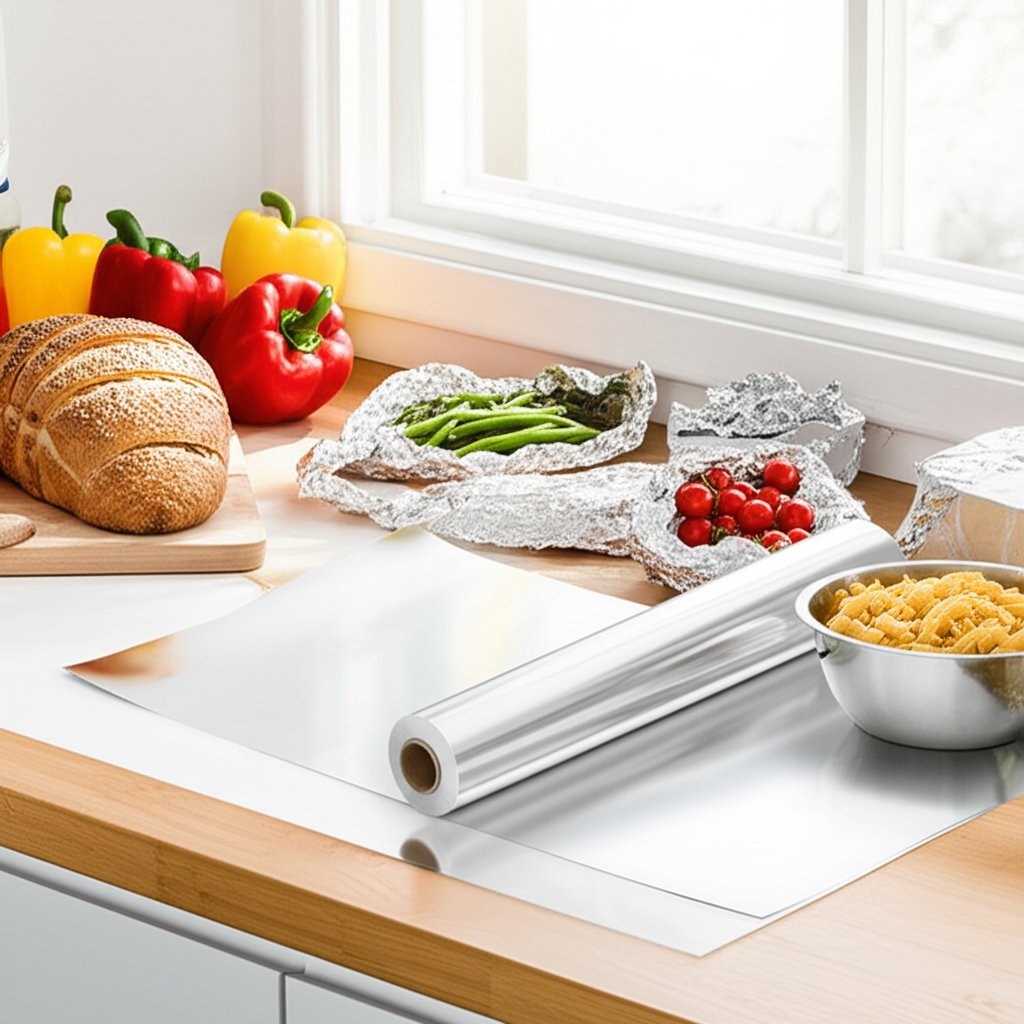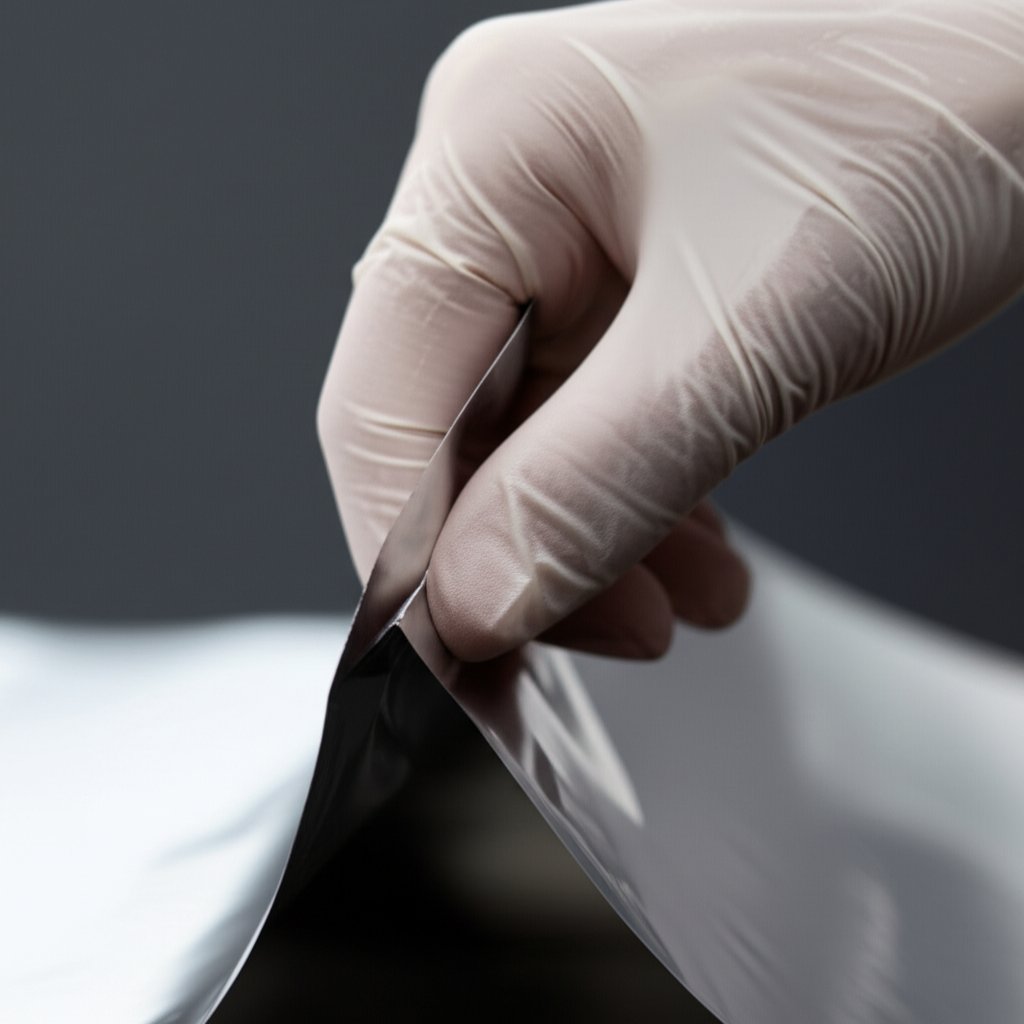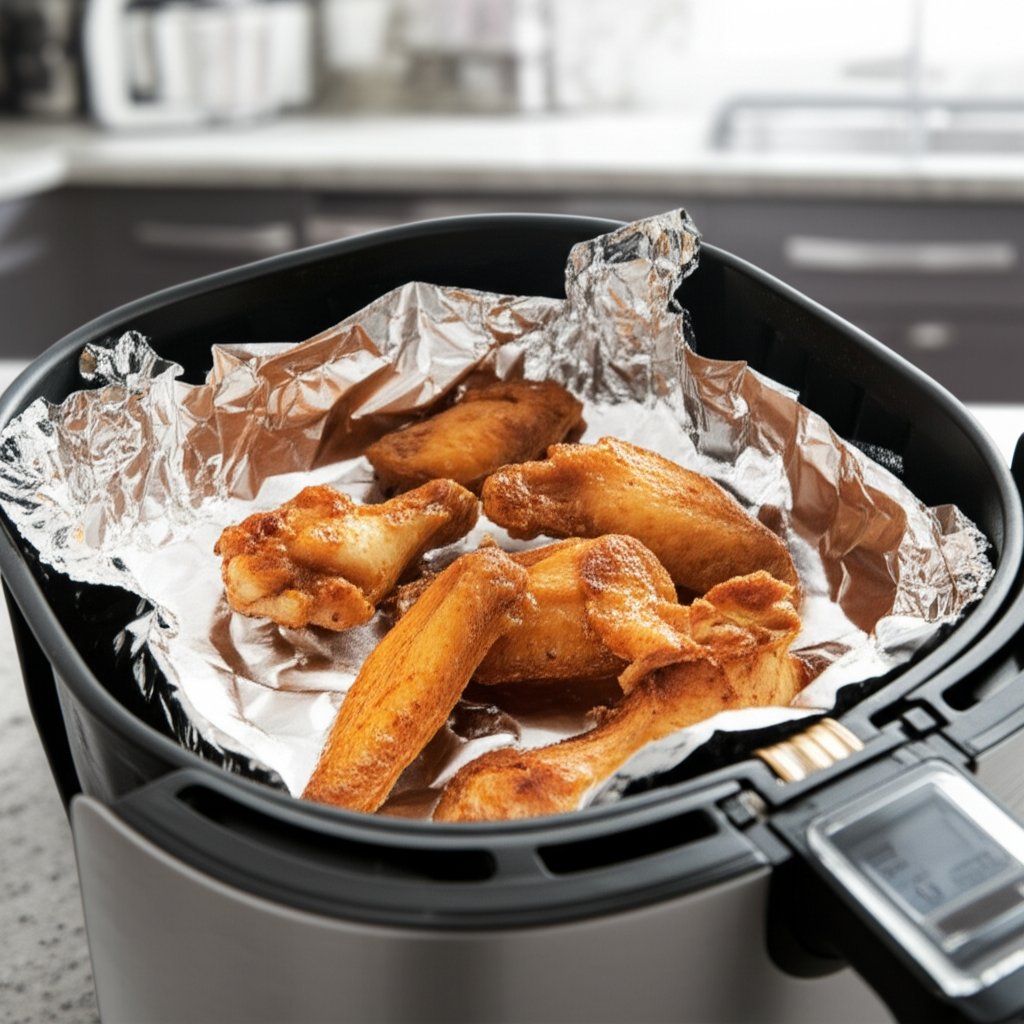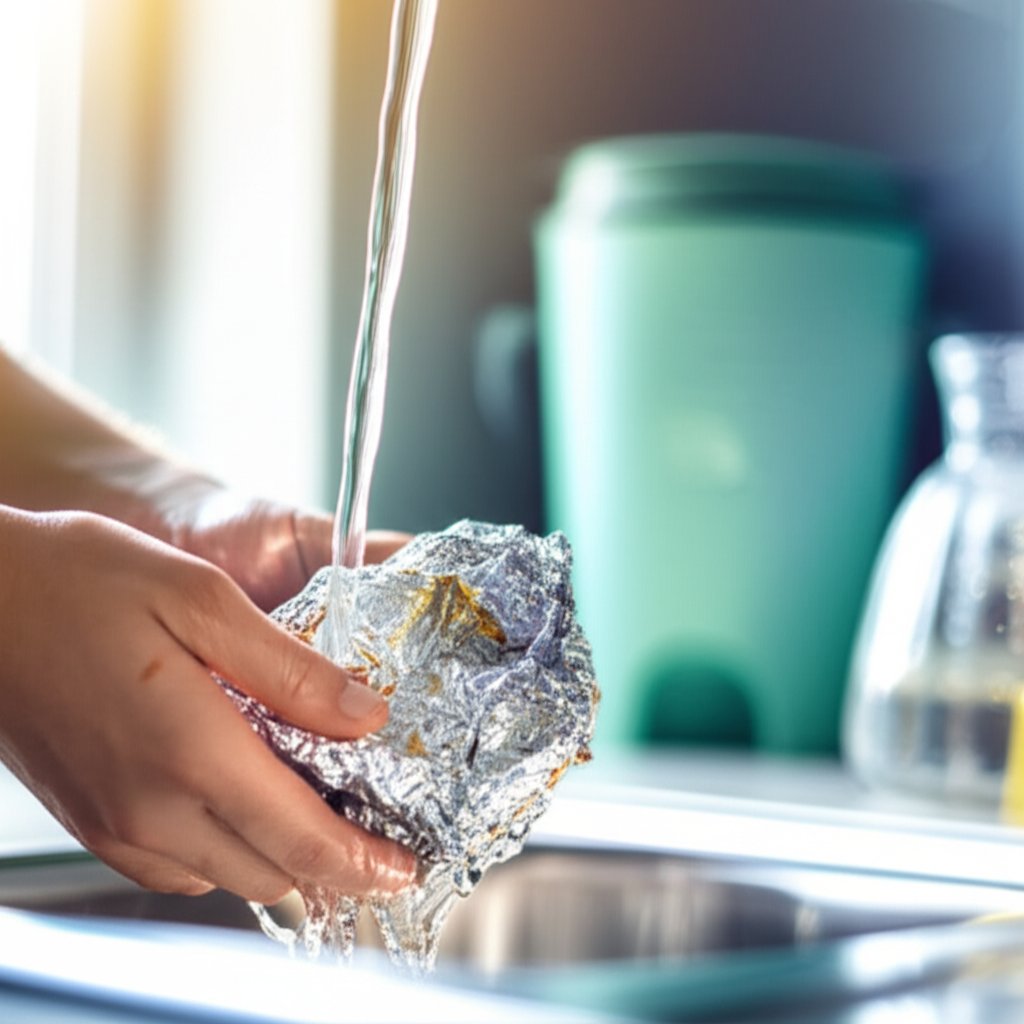
When you open your kitchen drawer, what’s one item you’re almost guaranteed to find? For most households, it’s aluminum foil—a simple, shiny sheet that proves indispensable in countless ways. But have you ever stopped to wonder why this humble material is so widely trusted, or just how many roles it can play in your daily routine?
Aluminum foil is far more than a food wrap or a way to keep leftovers fresh. Imagine lining your oven tray to catch drips, scrubbing stubborn grime from pans, or even protecting your garden plants from curious critters—all thanks to this versatile household staple. Its unique properties make it a go-to for tasks ranging from cooking and baking to cleaning, DIY fixes, and even creative projects around the home. In fact, experts highlight that aluminum foil uses extend well beyond the kitchen, including sharpening scissors, cleaning silverware, and preventing garden pests.
But with such versatility comes important questions: Is it always safe to use foil for cooking? What about its impact on the environment? And are all foils created equal? These are just a few of the topics this comprehensive guide will address, empowering you to make informed choices for safer and more effective use.
Here’s what you’ll discover in this ultimate guide:
By the end of this guide, you’ll be equipped with the knowledge to maximize the benefits of aluminum foil in your home—using it safely, responsibly, and creatively. Ready to unlock the full potential of this everyday essential? Let’s dive in.

Ever unrolled a sheet of foil and wondered, “What is aluminum foil made of, and why does it work so well?” Let’s break it down in simple terms so you can understand why this material has become such a staple in kitchens and industries worldwide.
At its core, aluminum foil is made from pure aluminum metal that’s been rolled into incredibly thin sheets—sometimes as thin as 0.0065 millimeters (or 6.5 microns)! If you’ve ever noticed how easy it is to wrap foil around a sandwich or mold it over a baking dish, that’s thanks to its remarkable malleability. But the real magic lies in its combination of properties:
The process starts with pure aluminum, which is rolled into thinner and thinner sheets using heavy rollers. For the thinnest foils, two sheets are rolled together and then separated, resulting in one shiny side and one matte side—something you might have noticed when pulling a sheet from the box. This rolling method not only achieves the desired thinness but also imparts the familiar finish you see at home. For extra strength or special uses, foil can be laminated with paper or plastic, or coated for non-stick properties (source).
Long before aluminum foil took over, people used tin foil for wrapping and preserving food. However, tin was less malleable, left a metallic taste, and was more expensive. The big shift happened in the early 20th century, when aluminum became more widely available and affordable. By 1911, iconic brands like Toblerone were already wrapping chocolate in aluminum foil. Its rapid adoption in kitchens and industries was driven by its unbeatable combination of strength, flexibility, and food safety (learn more).
Imagine a single material that can keep your leftovers fresh, help cook a roast, line baking trays, and even shield electronics from interference. That’s the power of aluminum foil. Its versatility, safety, and convenience explain why it’s become a household essential—and why you’ll find it in everything from food packaging to insulation and electronics.
Now that you know what makes aluminum foil unique, let’s explore how to use it safely and effectively in your kitchen—starting with the oven.
Ever wondered, “Can you put aluminum foil in the oven without worry?” If you’re like most home cooks, you’ve probably reached for a roll of foil to line a baking sheet or cover a casserole. While aluminum foil is a kitchen hero for its versatility, using it in the oven comes with important safety considerations. Let’s break down how to use foil effectively, avoid common pitfalls, and answer some of the most frequent questions about oven use.
Aluminum foil is prized for its ability to withstand high temperatures and its flexibility in the kitchen. Here are some of the most popular—and safe—ways to use it in your oven routine:
Is it safe to use aluminum foil in the oven? Yes, it’s generally safe—as long as you follow a few key guidelines. Foil can handle temperatures up to 500°F, making it suitable for most baking and roasting tasks (Southern Living).
Can you put aluminum foil in the oven at high temperatures? Heavy-duty foil is best when using higher heat (up to 450°F or more), as it’s less likely to tear or degrade.
Should you line the oven bottom with foil? No. Lining the oven floor can block heat and airflow, damage the oven, or even start a fire. Always keep foil on racks or baking sheets.
| Do | Don’t |
|---|---|
|
|
By following these best practices, you’ll maximize the benefits of aluminum foil in the oven while keeping your food delicious and your kitchen safe. Next, let’s explore how foil fits into the world of modern appliances—starting with air fryers and their unique requirements.

Ever wondered, "Can you put aluminum foil in an air fryer?" If you love the convenience of crispy fries or mess-free chicken wings, this question is probably on your mind. Air fryers have become a kitchen essential for their speed and ease, but when it comes to lining the basket or wrapping food in foil, it’s important to understand the do’s and don’ts for both safety and performance. Let’s break down how to use aluminum foil in your air fryer the right way—so you can enjoy delicious results, easy cleanup, and peace of mind.
The short answer: Yes, you can use aluminum foil in an air fryer, but with a few important caveats. Air fryers work much like small convection ovens, circulating hot air to cook food quickly and evenly. This means that, unlike a microwave, putting foil in your air fryer won’t create sparks or damage the appliance (Food Network). However, improper use can affect cooking results or even pose safety risks.
Imagine you’re cooking saucy chicken wings or delicate fish—sometimes, lining the basket with foil makes cleanup a breeze and keeps sticky foods from burning onto the surface. You might also use foil to wrap leftovers, keep foods from rolling around, or create a sling for lifting fragile items. But, to get the best results, you need to use foil thoughtfully.
| Do | Don't |
|---|---|
|
|
Quality matters. To ensure safe and effective results, always choose food-grade foil that’s strong enough to withstand high temperatures and won’t tear easily. High-grade materials from reputable suppliers—such as those committed to rigorous manufacturing standards—can make a real difference in your kitchen experience. When you opt for premium foil, you’re less likely to encounter issues like tearing, leaching, or uneven cooking.
In summary, using aluminum foil in an air fryer can make your life easier, but only if you follow the right precautions. Remember: less is more, always weigh down the foil, and avoid acidic foods. Next, we’ll look at how aluminum foil behaves in another popular appliance—the microwave—and why the rules there are very different.
Ever found yourself staring at leftovers wrapped in foil and wondering, “Can you microwave aluminum foil safely?” It’s a question that pops up in kitchens everywhere—and for good reason. While aluminum foil is a kitchen staple for oven and air fryer use, its relationship with the microwave is much more complicated. Let’s break down the facts, the science, and the real-life exceptions so you can make informed choices and avoid kitchen mishaps.
Most of us have heard the warning: Don’t put metal in the microwave! But what actually happens if you do? The answer lies in how microwaves work. These appliances use high-powered radio waves to heat food quickly. Materials like glass and ceramic let these waves pass through, while water, fats, and sugars absorb them, causing your food to heat up. Metal, on the other hand, acts differently—it reflects the waves, rather than absorbing them, and that’s where the trouble starts (HowStuffWorks).
When you place a thick, solid piece of metal in the microwave, it simply reflects microwaves, which is why the oven’s interior walls are made of metal. But thin, flexible materials like aluminum foil behave differently. The intense electrical currents generated by microwaves can overwhelm thin foil, causing it to heat up rapidly—and sometimes, catch fire. If the foil is wrinkled or has sharp edges, it can spark, leading to even greater risks.
Sounds complex? Here’s the surprising part: In some very specific situations, small amounts of smooth, new aluminum foil can be used safely in the microwave. For example, the U.S. Food and Drug Administration notes that you can use small pieces of foil to shield parts of food (like chicken drumsticks) to prevent overcooking. But these exceptions come with strict rules:
|
So, can aluminum foil go in the microwave? The safest answer is usually “no,” unless you’re following very specific guidelines and are willing to monitor the process closely. When in doubt, transfer your food to a microwave-safe container. Your safety—and your microwave—are worth the extra step.
Next, we’ll address another common concern: Is using aluminum foil actually bad for your health? Let’s look at the science behind toxicity and safe usage guidelines.
When you wrap tonight’s leftovers or bake a lasagna, you might pause and wonder: Is aluminum foil toxic? Or maybe you’ve heard rumors linking it to serious health risks, like Alzheimer’s disease or other conditions. Let’s break down the facts from the myths, so you can use this kitchen staple with confidence and clarity.
First, it’s important to know that small amounts of aluminum can leach into food when you cook or store it in foil—especially at high temperatures or with acidic foods like tomatoes and citrus. Sounds alarming? The good news is that, according to health experts, the body is well-equipped to handle these tiny amounts. Most of the aluminum you ingest is excreted efficiently, leaving little to accumulate in your system (Healthline).
Let’s address the big question: Is aluminum foil dangerous to your health? For the vast majority of people, the answer is no. Aluminum is naturally present in water, soil, and many foods. It’s also used in common products like antacids and baking powder. While it’s true that cooking with foil—especially at high heat or with acidic foods—can increase the amount of aluminum in your meal, scientific research and major health organizations agree that these levels remain well below what is considered harmful for healthy individuals.
You may have heard about connections between aluminum and diseases like Alzheimer’s or kidney issues. Here’s what the science says:
Still want to play it safe? Here are some practical tips to reduce any potential for aluminum exposure in your kitchen:
Bottom line: For most people, using aluminum foil in everyday cooking and food storage is considered safe. If you have kidney disease or are concerned about cumulative exposure, consult your healthcare provider for personalized advice.
Understanding the science behind aluminum foil safety empowers you to use it wisely—balancing convenience with peace of mind. Next, let’s consider another hot topic: how aluminum foil impacts the environment and what you can do to recycle it responsibly.

When you finish a roll of foil or unwrap leftovers, you might wonder: Is aluminum foil recyclable? Or does it always belong in the trash? The answer isn’t as simple as you might think, but understanding how aluminum foil recycling works can help you make greener choices—and even save a surprising amount of energy.
Aluminum foil is made from the same highly recyclable metal as soda cans. In fact, aluminum is one of the highest-value materials in the recycling stream. But there’s a catch: foil must be clean and free of food residue before it can be recycled. Unlike cans, which are usually empty and dry, foil often comes into contact with grease, sauces, or crumbs. These contaminants can disrupt the recycling process, causing entire batches to be rejected and sent to the landfill instead.
So, is aluminum foil recyclable in your area? The answer depends on local recycling rules. Some curbside programs accept clean foil, while others do not. Many transfer stations and metal recyclers will take it, but always check with your local provider before tossing foil in the bin (Earth911).
Imagine you’ve just finished baking or grilling—what’s next for that used foil? To ensure it gets a second life, follow these practical steps:
Why go to the trouble of cleaning and recycling foil? The environmental benefits are huge. Recycling aluminum uses up to 95% less energy than producing new aluminum from raw ore. To put that in perspective, recycling just one ton of aluminum saves about 14,000 kilowatt-hours of electricity—enough to power an average home for a year. In the U.S., about 60% of aluminum is recycled, but higher rates are possible in areas with strong recycling programs.
Beyond energy savings, recycling aluminum helps conserve natural resources and reduces the need for environmentally damaging mining operations. Since aluminum can be recycled indefinitely without losing quality, every piece you recycle helps keep valuable materials in use and out of landfills.
By taking these small but important steps, you’ll play a key role in reducing waste and saving energy. Next, let’s explore the different types of aluminum foil available and how to choose the right one for your needs.
Ever stood in the grocery aisle, staring at the shelves and wondered, “Which aluminum foil is right for my kitchen?” With so many types—standard, heavy duty, non-stick, pre-cut sheets, pans, and more—it’s easy to feel overwhelmed. Let’s break down the differences, so you can confidently pick the perfect foil for baking, grilling, storing, and beyond.
When you pick up a box of foil, thickness matters. The gauge (or thickness) determines how well the foil stands up to heat, weight, and wear. Here’s a quick rundown of the most common types you’ll see—and what they’re best at:
| Type | Typical Thickness | Best Uses | Key Features |
|---|---|---|---|
| Standard Duty | 0.00062" (55 gauge) |
|
Flexible, economical, everyday use |
| Heavy Duty Aluminum Foil | 0.0009" (80 gauge) |
|
More puncture and tear-resistant; handles higher heat |
| Extra Heavy Duty | 0.0013" (135 gauge) |
|
Maximum strength and durability |
| Non-Stick Foil | Standard or heavy duty base |
|
Food-safe coating; easy cleanup |
| Pre-Cut Aluminum Foil Sheets | Varies (standard or heavy duty) |
|
Pre-cut, convenient, time-saving |
| Foil Pans & Plates | Varies by product |
|
Disposable, oven-safe, sturdy |
Imagine you’re prepping for a backyard barbecue or a weeknight casserole—what’s the best choice? Here’s how to match the type to your task:
Not all aluminum foil is created equal. The strength, consistency, and safety of your foil depend on the quality of raw materials and the precision of manufacturing. Leading suppliers—like Shengxin Aluminum—are known for their commitment to high standards, ensuring reliable performance whether you’re lining a baking tray or wrapping leftovers. When you choose foil from a reputable manufacturer, you benefit from:
For example, 14-inch aluminum foil strikes a balance between coverage and manageability, making it an excellent choice for home cooks and professionals alike. It’s especially useful for lining baking trays or creating grilling packets without excess waste or awkward overhangs (Shengxin Aluminum).
By understanding the types of aluminum foil and their best uses, you’ll save time, reduce waste, and get better results in the kitchen. Next up, let’s explore some surprising and creative ways to use foil that go far beyond cooking.

Ever wondered if there’s more to aluminum foil than wrapping leftovers or lining a baking tray? Imagine using it to sharpen scissors, keep pets off the counter, or even boost your Wi-Fi signal. Sounds unlikely? Let’s explore some of the most unexpected, ingenious, and downright fun ways people use this household staple—plus, we’ll settle the age-old debate about which side of the foil should face up.
If you’ve ever paused mid-cooking and thought, "Should the shiny side of aluminum foil face up or down?"—you’re not alone. This question has sparked kitchen debates for years. The answer is simpler than you might think: for regular foil, it doesn’t matter. The difference between the shiny and dull sides is simply a result of the manufacturing process, where two sheets are rolled together and then separated. Both sides are equally food-safe and perform the same in cooking, so use whichever side you prefer. The only exception? Non-stick foil—the dull side is typically coated and should face the food for best results (Family Handyman).
Picture this: You’re out of kitchen gadgets, or you need a quick fix for an everyday problem. Here’s where aluminum foil shines—sometimes literally! Check out these creative and lesser-known uses:
Beyond the kitchen, aluminum foil’s unique properties make it useful in other forms—like aluminum foil tape. This adhesive-backed tape is used in HVAC work, insulation, and even crafts, offering a heat-resistant, moisture-proof solution for sealing and repairs.
As you can see, aluminum foil is much more than a kitchen helper—it’s a true multi-tasker for every room in the house (and beyond). Next, we’ll wrap up with key takeaways and tips for choosing the best quality foil for your needs.
When you reach for a roll of aluminum foil, you’re tapping into one of the most versatile and practical tools in any household or professional kitchen. But after exploring its many uses—from baking and grilling to quirky life hacks—you might be wondering: what’s the real secret to getting the most out of this everyday essential?
Imagine prepping a big family meal or running a busy kitchen. The best aluminum foil isn’t just about thickness—it’s about reliability, food safety, and consistent performance. High-quality foil resists tearing, stands up to heat, and keeps your food protected, whether you’re roasting, freezing, or serving.
That’s why sourcing quality aluminum foil from trusted manufacturers matters. Established suppliers like Shengxin Aluminum are known for their rigorous standards, advanced production capabilities, and commitment to food-safe materials. This means you get foil that’s not only effective but also safe and sustainable for every application—from home cooking to professional catering.
With this knowledge, you’re empowered to use aluminum foil smarter, safer, and more sustainably—whether you’re baking, grilling, crafting, or cleaning. For those who demand the highest standards, partnering with leading manufacturers like Shengxin Aluminum ensures you always have the best materials for both everyday and specialized needs. Ready to make the most of every sheet? The choice is in your hands.
Both terms refer to the same product. 'Aluminum foil' is commonly used in the Americas, while 'aluminium foil' is preferred in Europe and other regions. The difference is purely linguistic, with no change in material or function.
Wrapping a doorknob with aluminum foil can serve as a deterrent for static electricity transfer and may be used for added security or during painting to prevent mess. While not a mainstream safety tip, it is a popular household hack for specific situations.
Aluminum foil is safe for use in ovens and air fryers when following safety guidelines—avoid lining the oven floor and ensure airflow in air fryers. Microwaves generally require caution; only use small, smooth pieces if the appliance manual allows, and never let foil touch the microwave walls.
Scientific evidence shows that aluminum foil is safe for everyday cooking and food storage. Minimal aluminum may transfer to food, especially with acidic ingredients, but these levels are well below harmful thresholds for healthy individuals. If concerned, avoid using foil with acidic foods and high heat.
Clean aluminum foil is recyclable in many areas. Remove all food residue, ball up small pieces, and check local recycling rules. Recycling aluminum saves up to 95% of the energy required to produce new aluminum, making it a sustainable choice for the environment.
 dịch vụ trực tuyến
dịch vụ trực tuyến 0086 136 3563 2360
0086 136 3563 2360 sales@sxalu.com
sales@sxalu.com +86 136 3563 2360
+86 136 3563 2360